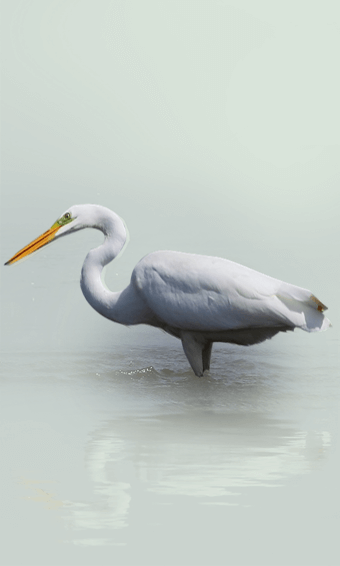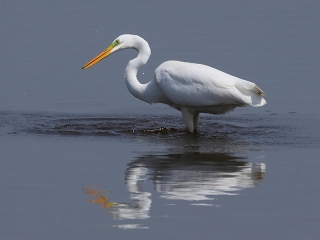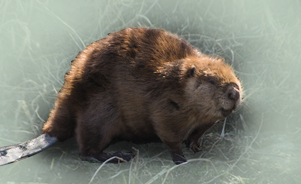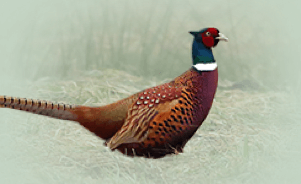The Great Egret/The Great White Heron Ardea alba

Features
It is one of the larger representatives of herons and it is only slightly smaller than the gray heron. Their feathers are wholly white, and can be distinguished from other white herons by their orange beaks and dark legs. The males and females can not be distinguished by appearance alone.
| Species | Bird |
| Living space | Swamp |
| Size | 85 -100 cm |
| Weight | 0,7 -1,5 kg |
Description
This is a bird that is active during the day, particularly in the twilight hours when it searches for food either individually or in small groups. In the wetlands, for example, lakes and rivers and swamps or seas, their diet mostly cosists of fish, amphibians, snakes and aquatic invertebrates - mainly insects and crustaceans. In dry areas, the majority of its diet is made up of terrestrial animals, such as large insects, reptiles, young birds and small mammals. In the evening, large white herons gather in a group bedding area. They prefer to spend the night in trees near water. The large white heron nests from April to June in colonies of various size ranging from a few dozen to several hundred couples. The nest, made of branches and other plant material, is most often built in trees over water or amongst the reeds. The large white heron does not nest in Slovenia, but is a regular guest here during its migrations. During the year, they can be recognized by their slow, powerfully swinging wings, necks held in bent S-shape positions, and feet that stick out far behind their tails.The Great Egret/The Great White Heron
on the habitat Temenica
It is a migratory bird, which can be seen between March and November.

Features Temenica (3)
SPECIAL ogr.




